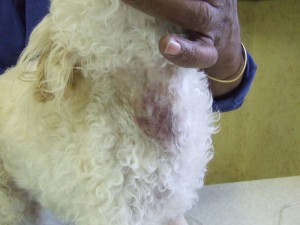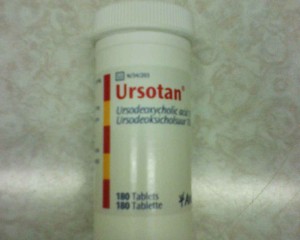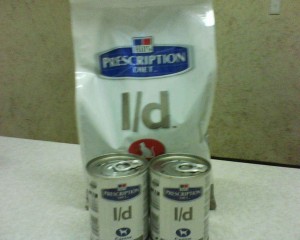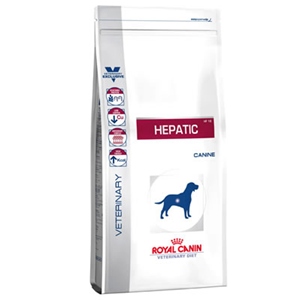Health Focus – Liver Disease
[ad#Commission Junction – Pet Care Choice]
LIVER DISEASE IN ANIMALS
The liver is one of the most important organs in the body and has many different functions. The liver is the organ that helps break down poisons in the body, as well as drugs and anesthetics. The liver works together with the pancreas to keep blood sugar at a normal level. It also stores iron for blood production and helps in the breakdown of old red blood cells in the body. It produces bile, which helps to digest fats that are eaten by your dog and produces clotting factors, which help platelets stick together to form a clot when there is an injury, without which, your animal would bleed to death. The liver also produces blood proteins such as albumin, which help to keep the blood at a certain thickness so that the cells in the blood such as red and white blood cells stay healthy and water does not leak out the veins into the abdomen or intestines. Without a healthy liver, an animal can become very sick indeed. But the liver is one of the few organs that can regenerate itself as long as the damage does not cause significant scarring. Other organs such as the kidney and the heart are unable to replace a part that dies which is why kidney and heart failure are so common in older animals. But if the liver is badly scarred, it will also fail.
SIGNS OF LIVER DISEASE
If a liver isn’t working properly, then the symptoms your dog or cat will show will be due to one or all of the functions of the liver being impaired:
Weight loss – The liver helps in digestion of fats. An animal that doesn’t digest his food properly will not be able to absorb that food and will lose weight.
Vomiting and poor appetite – The liver breaks down poisons in the body every day. A lot of poisons and ammonia come into the body from all the bacteria in the intestine and the liver processes and detoxifies all of these. If the liver doesn’t work then the poisons build up in the body, making your pet feel nauseous and vomit.
Diarrhea – If fats are not digested properly, they are fermented by bacteria in the intestine, which causes a nasty diarrhea. Also, if blood proteins are not being made by the liver, the blood starts to lose water into the gut, which causes a diarrhea.
Jaundice – Jaundice is a yellow discoloration of the blood, gums, skin and the whites of the eyes due to a build up of bile in the body. Bile is partially made from old broken down red blood cells and tends to build up in the blood if the liver isn’t working well. This makes your dog feel very nauseous and tired.
Changes in behavior – often due to a build up of poisons in the blood, which start to affect the brain.
Seizures – also due to a build up of poisons in the blood and low blood sugar because the liver can’t keep the sugar levels in the blood normal.
Bloated belly filled with water – If the liver stops making blood proteins, the blood gets thinner and water leaks out the veins into the abdominal cavity.
Black diarrhea and vomiting blood or black mucus – From bleeding into the stomach and intestines because the blood can’t clot.
Excessive thirst – from build up of toxins and not having enough blood protein.
Bruising easily – because the blood can’t clot properly because the liver has stopped making clotting factors.
WHAT CAUSES LIVER DISEASE?
Infections in the liver can cause liver disease. Infections can be either viral or bacterial. Viruses such as Infectious Canine Hepatitis can massive liver damage with diarrhea, vomiting and jaundice in puppies. Bacteria that infect the liver often come up into the liver from the intestine. The liver empties the bile through a pipe with a one way valve into the intestine, But if there is inflammation, like a gastroenteritis the valve can open up and bacteria move up the pipe, then into the gallbladder and the liver. This type of infection is called cholangiohepatitis and is very common in cats. It is one of the main causes of cats vomiting all the time. Leptospirosis is an infectious bacteria, found in wet climates, that can damage the liver and kidneys.
Cancer in the liver is very common in older animals. Cancer can originate in the liver or spread there from elsewhere in the body. The liver is one of the main areas for cancer anywhere in the body to spread to. The two main types of cancer I see in dogs in the liver are Hemangiosarcoma, which is a cancer of veins and arteries and Lymphoma, which is a cancer of the glands. Sarcomas and Carcinomas are also fairly common.
Poisons – in people alcohol is a major poison that causes liver damage. In dogs, the poisonings that are common are often plants chewed in the garden, such as Cycads, and Syringa berries. Spoiled food dug out of rubbish bins can cause a nasty diarrhea and liver poisoning as well. Other common poisonings include animals getting into human medication, long term overdosing of prescribed medication, Rimadyl in some Labradors, and using dog tick and flea products on cats, which can cause liver failure. Cats cannot break down drugs such as paracetamol in their liver like dogs and humans can, and dosing even a single paracetamol tablet can kill a cat. For this reason you should never give cats human medicine at home – ALWAYS PHONE YOUR VET TO CHECK FIRST!!!
Old age wear and tear – over an animal’s life, he will often do things like eat spoiled food, or get an infection that can affect his liver. If the damage to the liver is not severe enough to kill him at the time, he will recover but a part of his liver may be scarred, and a scarred liver cannot replace cells that are damaged. Over the years all these little scarred areas cause the overall function of the liver to slowly decline, until, at an old age, the liver cannot work properly anymore and can become cirrhotic (hard and shrunken).
Fat – if you get a lot of fat in the liver, it squashes the liver cells, so they can’t work properly. Obese cats that stop eating for more than a day are in real danger because their body starts breaking down their fat for energy, but it can break it down too fast, and suddenly the blood is full of fat, which the liver takes up faster than it can turn it into energy. The fat builds up in the liver until it can’t work anymore. Animals with hormonal problems such as sugar Diabetes and Cushings disease (Hyperadrenocorticism) will also tend to develop fatty livers which clear up when they get proper treatment.
Genetic problems – certain breeds can have genetic problems with their livers. Yorkshire terriers can have liver shunts, which is where veins don’t flow through the liver from the intestine as they should, but straight past. These dogs don’t grow properly and may show weird behavior such as circling, or seizures, especially after meals. Bedlington Terriers can get a build up of copper in their liver, which poisons them slowly over time.
DIAGNOSIS OF LIVER DISEASE
Liver disease can be picked up using blood tests and an enlarged liver can be felt when your pet is examined. Raised liver enzymes on blood tests only indicate a problem in the liver. To see what the problem is, an ultrasound of liver liver is often very helpful. One can also take a few cells with a needle out the liver to check for cancer, or a biopsy with a punch at the same time. Certain more advanced tests such as MRI and scintigraphy can help diagnose specific problems such as shunts.
TREATMENT OF LIVER DISEASE
The basic treatment for most liver disease is supportive and works by reducing stress on the liver and helping it excrete bile and poisons. Antibiotics help to clear out stray bacteria in the bloodstream and reduce bacterial numbers in the intestine temporarily. Bacteria produce poisons like ammonia, so by reducing bacterial numbers, fewer poisons are produced, which gives the liver a rest. Certain laxatives such as lactulose, also make the intestine more acidic, which does the same thing. Most animals with liver problems are put on a multivitamin supplement which stimulates appetite and helps the liver repair what it can. Some drugs such as Ursodeoxycholic acid (Ursotan) help the liver excrete bile and poisons faster. Sometimes cortisone can be used in small doses to reduce the inflammation in the liver and stimulate appetite. Cortisone also helps reduce long term scarring in the liver.
A special liver diet is very helpful. Diets that are low in meat based proteins are best for damaged livers. Strong meats are fermented by bacteria in the gut to produce high levels of ammonia and other poisons, which stress the liver. Hills makes a liver diet called L/D which has all the non meat proteins in it that your pet needs, as well as the vitamins. Home made diets can be cheese and pasta based, as dairy products are fine for the liver. If you make a home based diet, don’t forget to add the vitamins your pets needs to the food. Animals that have shunts or cancer in a single liver lobe will benefit from surgery. Unfortunately animals with metastatic cancer in the liver that has spread from elsewhere don’t do very well, but chemotherapy can be tried to induce temporary remission. Cat with fatty livers have to be fed with a tube or syringe three times daily for up to three months after an episode in order to recover. Copper accumulation can be treated with copper chelating drugs. Animals that are very ill with liver disease can be put on a drip and given enemas to reduce the stress on the liver.
Claire Demmer
www.yourownvet.com
MRCVS
BVSc (Hons)














Leave a Reply
You must be logged in to post a comment.